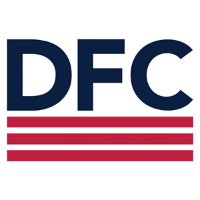The US International Development Finance Corporation (DFC) is considering a change to its current ban on financing projects with a nuclear reactor, a relic holdover policy from its predecessor agency OPIC. At first glance, some may worry that nuclear power isn’t relevant for emerging markets and wouldn’t align with DFC’s primary mandate to promote positive development outcomes. In reality, lifting the prohibition would be a proactive response to a fast-evolving technology, burgeoning demand for clean energy, and a competitive global marketplace. Removing the outdated ban would be good for the United States, good for Africa and other energy-hungry regions, and good for the planet. Here are six reasons why:
- The next generation of smaller, safer nuclear power is here. Forget about the huge 1,000 MW custom-built power plants of the past. The new nuclear power models will be far smaller, factory-fabricated, and deploy new technologies that make these reactors “walk-away safe” (e.g., they use passive features like gravity to move coolant rather than rely on pumps). In the United States, we’re already modernizing our licensing and regulatory systems to respond to these new technologies for our domestic market. For instance, California-based microreactor developer Oklo is the first company to apply for a license under the new system. Oregon-based NuScale is likely to break ground on its first-of-a-kind modular system before 2023. And this list will grow; DC think tank Third Way has mapped more than 50 different private sector advanced nuclear projects across the US.
- Advanced nuclear designs are especially suitable for frontier and emerging markets. Small modular reactors (SMRs), microreactors, and other passively-safe designs will be far more flexible and thus useful in a range of environments. Oklo’s first model is just 1.5 megawatts (MW) — similar in power output to a wind turbine — and is aiming to replace diesel generators in remote communities in places like Alaska and Canada. It is easy to imagine similar uses for island communities in countries like Indonesia and Thailand. NuScale’s SMRs will be built in 60 MW modules that can be sold solo or linked up in 6- or 12-packs, depending on demand. These new approaches enable their use in a broader variety of markets compared with past nuclear (district heating, industrial process heat, desalination) making them ideal for off-grid, small-scale industry in emerging economies.
- A diverse range of countries are already shopping for nuclear. Advanced nuclear energy is not only for rich countries. Current nuclear powers which are ready to adopt this technology today include India, South Africa, Mexico, Argentina, and Brazil. Even for those countries planning for nuclear power in 2030 or beyond, now is not too early to start exploring options. Jordan, Ghana, Kenya, Indonesia, Thailand, Turkey and another 20+ countries are nearly ready or will be soon.
- Scalable energy systems are wholly aligned with DFC’s mission. The DFC was built to partner with the private sector to solve the most critical development challenges. Financing reliable power at scale is a big part of delivering on that lofty goal, with demand for electricity in Africa projected to more than double by 2040. Worries that nuclear power projects might overwhelm the DFC budget or take away funding for other sectors are unfounded. The agency has plenty of financial headroom and strict single project limits. DFC participation would help to de-risk projects and crowd-in capital, but its actual funding would likely be modest and in partnership with ExIm Bank, DOE, and other public and private actors.
- Retaining the outdated ban would only succeed in pushing countries toward Russian models. There are commercial and national security reasons to lift the prohibition as well. The Russian state-owned Rosatum is already aggressively marketing their SMRs across Africa and other regions. Russian deals come with multi-decade fuel lock-ins (and who knows what else) which would create significant leverage over US allies, in the same way natural gas does today. Instead, by using our development finance tools we can provide competitive options for countries that choose a nuclear power future.
- Nuclear is a stable source of zero-carbon power. All countries need affordable, reliable power at scale for industry, commerce, and big cities. Climate change will only increase demand for energy-intensive industries, like cement, steel, industrial air conditioning, and desalination. Scalable, low-carbon power is required to meet the parallel goals of expanding modern energy access in emerging economies while also reducing greenhouse gas emissions.
So, no, no one is planning to build a conventional large-scale nuclear power plant in Nigeria. And no, this won’t swamp a young agency or detract from its core mission. Advanced nuclear is an exciting and potentially game-changing technology that can help to meet development, environmental, and US national security goals. DFC getting into nuclear power would help to foster an innovative global market for this promising new technology — and an important step toward solving the dual challenge of mitigating climate change while providing the energy needed for prosperity for all.
Jessica Lovering is a specialist on microreactors, a PhD candidate in Engineering and Public Policy at Carnegie Mellon University, and a fellow at the Energy for Growth Hub. Todd Moss is executive director of the Energy for Growth Hub and a nonresident fellow at the Baker Institute’s Center for Energy Studies at Rice University, the Center for Global Development and at the Colorado School of Mines’ Payne Institute.


